Graphic Mines
A Glossary of Glossolalia
Since
@reggae_exe
joined twitter in 2016, he has posted nearly every Friday an
insistent question:
"are you guys up for some reggae tonight?”
Sometimes he drops the question mark. Other times, he types entirely
in
Greek script
. He has included ascii images of cats dancing, eating, and sleeping to (presumably) reggae. He once staged an emoji car chase framing an allcaps “ARE YOU UP FOR SOME REGGAE TONIGHT.” He gave the cat abs, once:

Here’s a post from March 14, 2020:

Here’s another from October 26th, 2019:
The nearly 500 entries have now become a collection, an ode to absurdity, one that only registers as a body of work. A commitment to the bit obscures the original referrent, warping the one-note joke into something artful.
I recognized his phrase from somewhere, and its only after reverse-image searching @reggae_exe’s avi that I found it’s origins. A throw-away gag from Terry Zwigoff’s Ghost World (2001). Thora Birch’s Enid had just roled her eyes at “like the biggest idiot of all time,” who dimly asks, “Are you up for some reggae tonight?”
I saw Ghost World on IFC in 2003, on my parent’s red Ikea sectional. I remember only a few things about the movie: a Southern Californian strip, the jangle of a bell as Steve Buscemi entered a record store, Enid saying goodbye to Rebecca, the general dread of a rainless LA. It was a sad sunken eyes movie that captured the waning nostaliga for the 1950’s that so animated the 1990’s.
Zwigoff adapted the film from Clowes’ 1997 comic, which I picked up from a Barnes & Noble in Pentagon Row after seeing the movie. The comic section would have been near a set of windows facing out toward the Pentagon, because I remember the evening light across the comic as I read. SoCal contracted and expanded across each panel; Clowes’ linework was more graphic than expressive.
I might have been 14, and my twenties seemed as washed out as the comic's blues. The fact that they kept approaching warranted a snappy slacker scoff. More than I wanted to be Enid, I wanted to be in 1997.
Because 2004 sucked. The Iraq War remained insistently real, and culture kept insisting we listen to Maroon 5. Million Dollar Baby was America's only film, and "Pieces of Me" was America's ambient supermarket soundtrack. Barnes & Noble, with its redwood shelving, felt like the appropriate avatar for culture under the Bush administration: a bank for books.
Barnes & Noble felt like the internet, and the internet felt like the nineties, and the future felt like an eyeroll. Or maybe the space between the panels. Or maybe the bus stop where Enid waits at Ghost World’s end.
@reggae_exe isn’t interested in Ghost World, or 2001, or even reggae. He seems committed to only form, invested in contorting a single sentence into novel geometries, into expressions that did not exist as film or comics.
He's also not serious, which to my nostalgia-addled brain, makes him credible. His act of petty design offers a scrollable adaptation, one that flattens past, present, and future. One that makes something embarrassing a profound.
@reggae_exe is the angel novus.
The @reggae_exe is also a meme. Vinca Kruk and Daniel van der Velden offer a succinct reading of the “meme” in their 2012 publication, Can Jokes Bring Down Governments?. They trace the infectious character of these language viruses from Richard Dawkins (who coined the term “meme”) to the weaponization of “Rickrolling” to Tahir Square. In their essay “Meme,” Kruk and van der Velden characterize how a meme transmutes a “collective memory” (35) into a copiable form. They invoke the author Douglas Hofstadter to characterize this form: “memes look a lot like self-referential patterns.” (34).
Through feverishly repetition, @reggae_exe aims to strip “are you guys up for some reggae tonight?” of meaning and enter “some kind of strange loop” (34). Like Seth Brundle in The Fly, he enters the teleporter, and emerges from the otherside, reconfigured: a buff cat.
While promoting his 2016 film HyperNormalization, Adam Curtis briefly described the new “memescape” of the 21st century. According to him, the internet resembles less the sepia green of the Matrix and more downtown Detroit in Robocop: a space populated by signifiers loosed from their signifieds. Mowhawked punks wandering from rusted factory to rusted factory. Hollowed-out storefronts. Both a utopian and dystopian future set in 1987.
Like those mohawked punks, graphic designer too must wander this bombed out “memescape,” hustling to make a living from images. Kruk and van der Velden’s further this reading, suggesting that “Graphic design is now a nameless collective of survivors of the (self-)destruction of paid labor.” (70). We are all trying to get by, and the internet offers designers a lonely territory for solidarity, a space where the “inessential” might take “some kind of center-stage.” (72). We’re all just trying to find some reggae together.
I started writing this essay on Wednesday March 11th. On twitter, someone posted Sarah Palin dressed like a muppet, singing Sir Mix A Lot on The Masked Singer. Chet Hanks, shirtless and heavily tattooed, recorded a message on Instagram letting us know that his parents, Tom Hanks and Rita Wilson, contracted COVID-19. Joe Biden just defeated Bernie in Michigan, and wandered out of frame during a virtual town hall meeting.
On Friday, RISD closed down. COVID-19 escalated into a pandemic, and @reggae_exe posted:
Was I up for some reggae? The meme persistently folds another moment into its complicated surface: Ghost World, and twitter, and the early 2000s, and the late 2010s, and now a pandemic.
Currently, my practice ticks like the reggae clock—a careful barometer of the absurd. How could I not make this work? I’ve been freed from the burden of a client. I don’t have to adhere to any brand guidelines.
I’m making “memes” for me.
I came to graphic design through Ezra Pound’s Cantos, through Anne Carson’s Nox, through W.G. Sebald’s The Rings of Saturn. Through Daniel Clowes.
I bought Ezra Pound from that same Barnes & Noble in 2012. The interior hadn't changed at all. It remained endlessly virtual.
Their influence still directs my attention, still comforts me. Which is what I hope graphic design might do now, as we enter a recession, a new uncharted memescape, a new future that will never arrive.
Alice Notley constructs arks, and trees, and eyes with words. Her poetry feels appropriate for our moment, “memeable” and collective. She points towards a future where we might become poetry, where language and image and self might intersect. She seems up for some reggae.
. He has included ascii images of cats dancing, eating, and sleeping to (presumably) reggae. He once staged an emoji car chase framing an allcaps “ARE YOU UP FOR SOME REGGAE TONIGHT.” He gave the cat abs, once:

Here’s a post from March 14, 2020:

Here’s another from October 26th, 2019:
The nearly 500 entries have now become a collection, an ode to absurdity, one that only registers as a body of work. A commitment to the bit obscures the original referrent, warping the one-note joke into something artful.
I recognized his phrase from somewhere, and its only after reverse-image searching @reggae_exe’s avi that I found it’s origins. A throw-away gag from Terry Zwigoff’s Ghost World (2001). Thora Birch’s Enid had just roled her eyes at “like the biggest idiot of all time,” who dimly asks, “Are you up for some reggae tonight?”
I saw Ghost World on IFC in 2003, on my parent’s red Ikea sectional. I remember only a few things about the movie: a Southern Californian strip, the jangle of a bell as Steve Buscemi entered a record store, Enid saying goodbye to Rebecca, the general dread of a rainless LA. It was a sad sunken eyes movie that captured the waning nostaliga for the 1950’s that so animated the 1990’s.
Zwigoff adapted the film from Clowes’ 1997 comic, which I picked up from a Barnes & Noble in Pentagon Row after seeing the movie. The comic section would have been near a set of windows facing out toward the Pentagon, because I remember the evening light across the comic as I read. SoCal contracted and expanded across each panel; Clowes’ linework was more graphic than expressive.
I might have been 14, and my twenties seemed as washed out as the comic's blues. The fact that they kept approaching warranted a snappy slacker scoff. More than I wanted to be Enid, I wanted to be in 1997.
Because 2004 sucked. The Iraq War remained insistently real, and culture kept insisting we listen to Maroon 5. Million Dollar Baby was America's only film, and "Pieces of Me" was America's ambient supermarket soundtrack. Barnes & Noble, with its redwood shelving, felt like the appropriate avatar for culture under the Bush administration: a bank for books.
Barnes & Noble felt like the internet, and the internet felt like the nineties, and the future felt like an eyeroll. Or maybe the space between the panels. Or maybe the bus stop where Enid waits at Ghost World’s end.
@reggae_exe isn’t interested in Ghost World, or 2001, or even reggae. He seems committed to only form, invested in contorting a single sentence into novel geometries, into expressions that did not exist as film or comics.
He's also not serious, which to my nostalgia-addled brain, makes him credible. His act of petty design offers a scrollable adaptation, one that flattens past, present, and future. One that makes something embarrassing a profound.
@reggae_exe is the angel novus.
The @reggae_exe is also a meme. Vinca Kruk and Daniel van der Velden offer a succinct reading of the “meme” in their 2012 publication, Can Jokes Bring Down Governments?. They trace the infectious character of these language viruses from Richard Dawkins (who coined the term “meme”) to the weaponization of “Rickrolling” to Tahir Square. In their essay “Meme,” Kruk and van der Velden characterize how a meme transmutes a “collective memory” (35) into a copiable form. They invoke the author Douglas Hofstadter to characterize this form: “memes look a lot like self-referential patterns.” (34).
Through feverishly repetition, @reggae_exe aims to strip “are you guys up for some reggae tonight?” of meaning and enter “some kind of strange loop” (34). Like Seth Brundle in The Fly, he enters the teleporter, and emerges from the otherside, reconfigured: a buff cat.
While promoting his 2016 film HyperNormalization, Adam Curtis briefly described the new “memescape” of the 21st century. According to him, the internet resembles less the sepia green of the Matrix and more downtown Detroit in Robocop: a space populated by signifiers loosed from their signifieds. Mowhawked punks wandering from rusted factory to rusted factory. Hollowed-out storefronts. Both a utopian and dystopian future set in 1987.
Like those mohawked punks, graphic designer too must wander this bombed out “memescape,” hustling to make a living from images. Kruk and van der Velden’s further this reading, suggesting that “Graphic design is now a nameless collective of survivors of the (self-)destruction of paid labor.” (70). We are all trying to get by, and the internet offers designers a lonely territory for solidarity, a space where the “inessential” might take “some kind of center-stage.” (72). We’re all just trying to find some reggae together.
I started writing this essay on Wednesday March 11th. On twitter, someone posted Sarah Palin dressed like a muppet, singing Sir Mix A Lot on The Masked Singer. Chet Hanks, shirtless and heavily tattooed, recorded a message on Instagram letting us know that his parents, Tom Hanks and Rita Wilson, contracted COVID-19. Joe Biden just defeated Bernie in Michigan, and wandered out of frame during a virtual town hall meeting.
On Friday, RISD closed down. COVID-19 escalated into a pandemic, and @reggae_exe posted:
Was I up for some reggae? The meme persistently folds another moment into its complicated surface: Ghost World, and twitter, and the early 2000s, and the late 2010s, and now a pandemic.
Currently, my practice ticks like the reggae clock—a careful barometer of the absurd. How could I not make this work? I’ve been freed from the burden of a client. I don’t have to adhere to any brand guidelines.
I’m making “memes” for me.
I came to graphic design through Ezra Pound’s Cantos, through Anne Carson’s Nox, through W.G. Sebald’s The Rings of Saturn. Through Daniel Clowes.
I bought Ezra Pound from that same Barnes & Noble in 2012. The interior hadn't changed at all. It remained endlessly virtual.
Their influence still directs my attention, still comforts me. Which is what I hope graphic design might do now, as we enter a recession, a new uncharted memescape, a new future that will never arrive.
Alice Notley constructs arks, and trees, and eyes with words. Her poetry feels appropriate for our moment, “memeable” and collective. She points towards a future where we might become poetry, where language and image and self might intersect. She seems up for some reggae.
Glossary
glossolalia “But the burns were like the fingerprints of an older time—before Ziegler and his brethren decided that traditional sources of value were merely superstition. “Those thousands of generations of technical progress” obliterated ritual, emptied out all meaning, glossolalia without divinity. I decided that’s what the painted mother foresaw, that she was saying farewell to candlelight, that she knew she was trapped inside a painting addressed to the future, where it could only be, however great, an instance of technique.” (Ben Lerner, The Topeka School) What motivated me to “empty out” a book cover? What made me “secularize” my form? When did I learn to speak in tongues, to speak in “Arial” and “Union”? If you’ve stripped meaning from the page —or rather, imbued only typeface and composition with meaning—perhaps this new grammar “addresses a future,” not a present. In short, by “obliterating ritual,” the “glossolalia” of design can’t help but voice something otherworldly, something transcendent: “an instance of technique.”
"even signs must burn" "Through objects, each individual and group searches out his-her place in an order, all the while trying to jostle this order according to a personal trajectory," (38)
Ideology "appears as a sort of cultural surf frothing on the beachhead of the economy," (144).
“All the repressive and reductive strategies are already present in the internal logic of the sign, as well as those of exchange value and political economy. Only total revolution, theoretical and practical, can restore the symbolic in the demise of the sign and of value. Even signs must burn," (Jean Baudrillard, For A Critique of the Political Economy of the Sign,163). A liberatory design practice must confront its own need to exist. In other words, if we take seriously Baudrillard’s claim, then one must examine the reproduction of these “internal logics;” we must examine the very need for design.
metonymy “Metonymy works by the contiguity (association) between two concepts, whereas the term "metaphor" is based upon their analogous similarity. When people use metonymy, they do not typically wish to transfer qualities from one referent to another as they do with metaphor.[10] There is nothing press-like about reporters or crown-like about a monarch, but "the press" and "the crown" are both common metonyms. Some uses of figurative language may be understood as both metonymy and metaphor; for example, the relationship between "a crown" and a "king" could be interpreted metaphorically (i.e., the king, like his gold crown, could be seemingly stiff yet ultimately malleable, over-ornate, and consistently immobile).” When it’s about to rain in west Texas, tarantulas will come out of their nests and fan their bodies out along the red ground in anticipation. Rabbits can plough their warrens up to 500 meters deep. They’ll carve out rooms off the branching tunnels, burrows to nest in.
xeno-architecture “The following conversations show that this future is already our present; symptomatic of this are the scale and structure of our current global issues, such as climate change, financial systems, national security, and their attendant crises, which exceed our human cognitive capabilities. The technological revolution we have engineered has spawned influential components that are steering us toward a society based on prediction and preemption. If Facebook convinces us whom to vote for at the next election, Google tells us what treatment to seek when we feel sick, and fridges, mobile phones, and public transport passes are in constant interconnection, tracking and determining our daily movements, we should be asking ourselves who, or what, is truly governing reality.” (Lietje Bauwens, Wouter De Raeve, Alice Haddad, Preface Perhaps it is high time for a xeno-architecture to match, 2) A classroom requires an architecture, one “co-created” with students, but perpetually abnormal. There’s a choreography to the education space (the syllabus, the homework, the performative pacing through the class) that tries to make the classroom feel natural, but we all know how strange these spaces remain. Most of the time boredom helps us (both teacher and student) slip into “passive following.” Those with power sleepily wield it.
There’s no answer here, but xeno-architecture at least imagines a future, wherein there is a “negotiation of speculative thought.” Where we can try to perform the weirdness of the public authentically, actively.
aesthetic regime It is this relationship that is at stake in the supposed distinction between two-dimensional and three-dimensional space as ‘specific’ to a particular form of art. To a large extent, the ground was laid for painting’s ‘anti-representative revolution’ by the flat surface of the page, in the change in how literature’s ‘images’ function or the change in the discourse on painting, but also in the ways in which typography, posters, and the decorative arts became interlaced. The type of painting that is poorly named abstract, and which is supposedly brought back to its own proper medium, is implicated in an overall vision of a new human being lodged in new structures, surrounded by different objects. Its flatness is linked to the flatness of pages, posters, and tapestries. It is the flatness of an interface. Moreover, its anti-representative ‘purity’ is inscribed in a context where pure art and decorative art are intertwined, a context that straight away gives it a political signification. This context is not the surrounding revolutionary fever that made Malevich at once the artist who painted Black Square and the revolutionary eulogist of [21] ‘new forms of life’. Furthermore, this is not some theatrical ideal of the new human being that seals the momentary alliance between revolutionary artists and politics. It is initially in the interface created between different ‘mediums’ - in the connections forged between poems and their typography or their illustrations, between the theatre and its set designers or poster designers, between decorative objects and poems - that this ‘newness’ is formed that links the artist who abolishes figurative representation to the revolutionary who invents a new form of life. This interface is political in that it revokes the twofold politics inherent in the logic of representation. On the one hand, this logic separated the world of artistic imitations from the world of vital concerns and politicosocial grandeur. On the other hand, its hierarchical organization - in particular the primacy of living speech/action over depicted images - formed an analogy with the socio-political order. With the triumph of the novel's page over the theatrical stage, the egalitarian intertwining of images and signs on pictorial or typographic surfaces, the elevation of artisans’ art to the status of great art, and the new claim to bring art into the décor of each and every life, an entire well-ordered distribution of sensory experience was overturned. (15) There's a distinctive grain to paper of John Hedjuk's Education of an Architect. The nine unit grid, squared off by a set black periods, hover just above the surface. You can feel its raised braille. Here, text, image, and symbol all fold inwards, the graphic becomes a communicative structure, both flat and dimensional.
the nine square problem The Nine-Square problem enables an in-depth investigation of binary architectonic relationships—although by no means is it an end in itself. Therefore, flexible model structures are devised to allow for larger and smaller square and non-square structures both in plan and section. Special emphasis is put upon structure(s) — site interactions with their externalized and internalized pressures defined through programmatic and physical parameters. In all cases an insistence upon rules of organization is maintained with the notion that 'concept' and 'percept' not only co-exist but become in fact inseparable within any given solution. Continuous involvement effects a reversal of Gresham's Law whereby the 'good drives out the 'bad' (aesthetically speaking) . . . concurrently demanding re-evaluation and modification of previously held architectural prejudices. (28) The young ram circled his empty enclosure, pinned in by a fence. The farmers had slaughtered his father, Ramlam, a month earlier once he had become too aggressive and begun to attach the other ram, his child. The young ram slowly approached as we walked around the fence, our boot sinking into the mud. It had snowed recently in Ithaca. When he reached us, he leaned against the wire and posts, allowing us to scratch the nape of his neck, stroke the moss of his head, touch his soft ear. He stared out at us from square pupils. As I pet his downy face, I remembered the pens at Dry Creek outside San Angelo.
Vineyard grapes grow upwards around the stakes rooted into the ground.
Process Scroll
Tweets by EverettEpstein
Project Scroll
Do you have the time?
This short collection of writing centered on capturing a day in
history (specifically, 02.18.2010) through a designed object.
Initially, I created a set of books, websites, and a poster in
response to Chelsea Manning's release of the Iraq logs. These
experiments winnowed down to a consideration of the "span" of time
as a parenthesis.
The Discreet Life of the Emoji
This website traces a single emoji backwards, through the screen,
through its code, to the mines of the Atacama Desert
Spans Type
“But the burns were like the fingerprints of an older time—before
Ziegler and his brethren decided that traditional sources of value
were merely superstition. “Those thousands of generations of
technical progress” obliterated ritual, emptied out all meaning,
glossolalia without divinity. I decided that’s what the painted
mother foresaw, that she was saying farewell to candlelight, that
she knew she was trapped inside a painting addressed to the future,
where it could only be, however great, an instance of technique.”
(Ben Lerner, The Topeka School)
Barefoot Archive
I've long admired Mark Baumer's writing and work. When he began to
walk across America in 2016, I closely followed on his Youtube
channel. Tragically, he died on this trip, and his project seemed
unfinished. This book transcribes and organizes his video blog,
memorializing the sprawling, funny, brave journey of Mark.
Emoji Poesis
Using Mark's poetry as a compositional tool, I built a set of
experiments with emojis along bezier points. These shimmering
changeable forms capture the living, uncanny qualities behind the
type.
(still) here
In quarantine, walks around my neighborhood have become alibis for
shapes, color, language, and pattern. I plan for this tool to create
a set of posters that might be then posted in my neighborhood. In
this final transformation, I would convert points along this grid
into the real telephone poles that make up the communication grid.
SlowerThanSlow
For this project, the website tries to slow down time to a slow
drip, focusing the mania of my practice into something slower than
slow. In allowing the text to overlay, I've tried to make the tick
of a clock something actual.
Photography 2020 Graduate Website
For this website, I struggled to define a graphic identity for the
2020 photography thesis show. After pulling an all-nighter to
incorporate multiple last-minute notes, I finally settled on a
lithe, but effective website that could responsively account for the
multiple artists and their writing.
Foldable Diary
For this website, I struggled to define a graphic identity for the
2020 photography thesis show. After pulling an all-nighter to
incorporate multiple last-minute notes, I finally settled on a
lithe, but effective website that could responsively account for the
multiple artists and their writing.

 to show the weather for Japan’s main mobile carrier, DOCOMO.
Beyond a sun, snowman, and umbrella, Kurita built a robust graphic
vocabulary; he sneaked in a novel language to the internet. Not
dissimilar to
Isotype’s ideograms
to show the weather for Japan’s main mobile carrier, DOCOMO.
Beyond a sun, snowman, and umbrella, Kurita built a robust graphic
vocabulary; he sneaked in a novel language to the internet. Not
dissimilar to
Isotype’s ideograms
 , Kurita’s characters illustrated a familiar grammar; flatly
8-bit, these ur-emojis framed life in the late 90s: flip phones,
playstation controllers, smiling cats, and Harry Potter glasses.
These icons found an intuitive use: suddenly adding subtext to a
message, adding voice, was as easy as a “heart” or a
“frowning face.”
, Kurita’s characters illustrated a familiar grammar; flatly
8-bit, these ur-emojis framed life in the late 90s: flip phones,
playstation controllers, smiling cats, and Harry Potter glasses.
These icons found an intuitive use: suddenly adding subtext to a
message, adding voice, was as easy as a “heart” or a
“frowning face.” 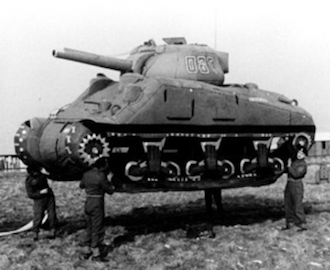 like pallbearers, I shoulder virtual dummies. Type moves across my
screen lightly, lassoed like balloons into new arrangements.
like pallbearers, I shoulder virtual dummies. Type moves across my
screen lightly, lassoed like balloons into new arrangements. ,
,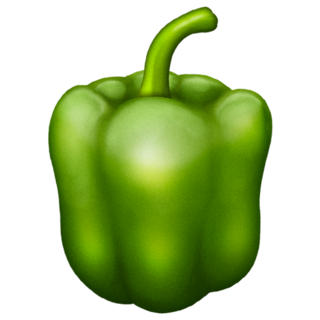 ,
, ,and
,and
 —the Unicode 💻 🤲 🔗⛰ of 🎉.
—the Unicode 💻 🤲 🔗⛰ of 🎉.  , 🚨 🚧 the 📢 of Unicode 14.0 for 6️⃣ 📆. Then, 2️⃣ 🗓, their 🖥 🚨
💣. Any 🔄 or 🤳⚡️ 🛑.
, 🚨 🚧 the 📢 of Unicode 14.0 for 6️⃣ 📆. Then, 2️⃣ 🗓, their 🖥 🚨
💣. Any 🔄 or 🤳⚡️ 🛑. 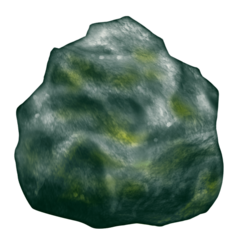 and 🔋, ⚡️ 🌍 📦 🔗.
and 🔋, ⚡️ 🌍 📦 🔗.  ⛓.” (94). 👥 🆕 ⚠️ 👷♂️ 🌀 🤝 to a “👐🏻 👩🌾,” which 👷♂️
🏭, 📈by the 🏛 🗃 🗯,
⛓.” (94). 👥 🆕 ⚠️ 👷♂️ 🌀 🤝 to a “👐🏻 👩🌾,” which 👷♂️
🏭, 📈by the 🏛 🗃 🗯,
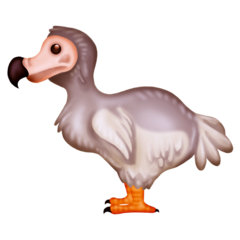 👉🙅♀️ 🇺🇸.
👉🙅♀️ 🇺🇸.
 .” In 🎖, Kelly 🛠: 🎈 🚙, 📍 ✈️ , and
.” In 🎖, Kelly 🛠: 🎈 🚙, 📍 ✈️ , and
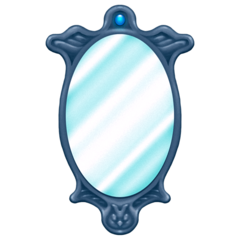 Kelly’s. 👀 Spencertown ✈️, 👌 the ◻️◻️◻️: ✨ across 🏔.
Kelly’s. 👀 Spencertown ✈️, 👌 the ◻️◻️◻️: ✨ across 🏔.
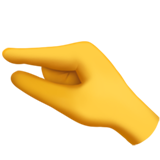 🔳. 🖱📲. 💭 Ellworth Kelly in
🔳. 🖱📲. 💭 Ellworth Kelly in
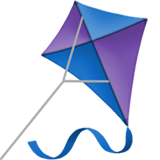 . my 🖥, like 🎈 🆕 💐.
. my 🖥, like 🎈 🆕 💐.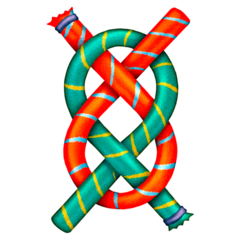 . 🌈 and 🔡 and 🔤—in 🤝, 💐 📂 👥.
. 🌈 and 🔡 and 🔤—in 🤝, 💐 📂 👥.